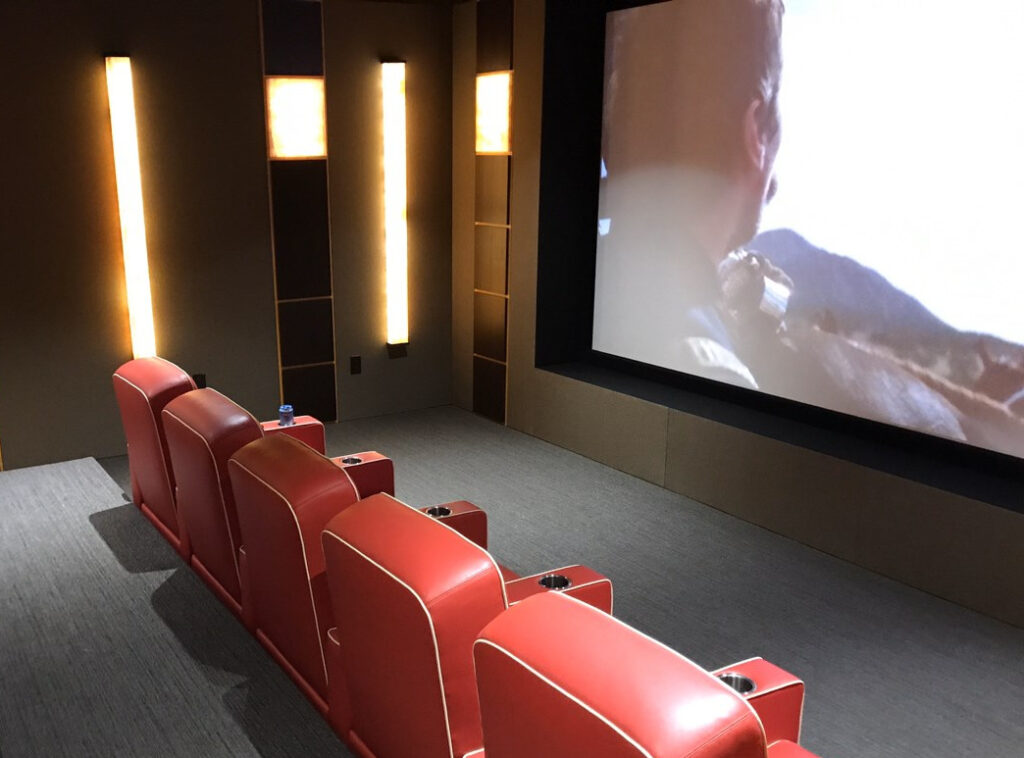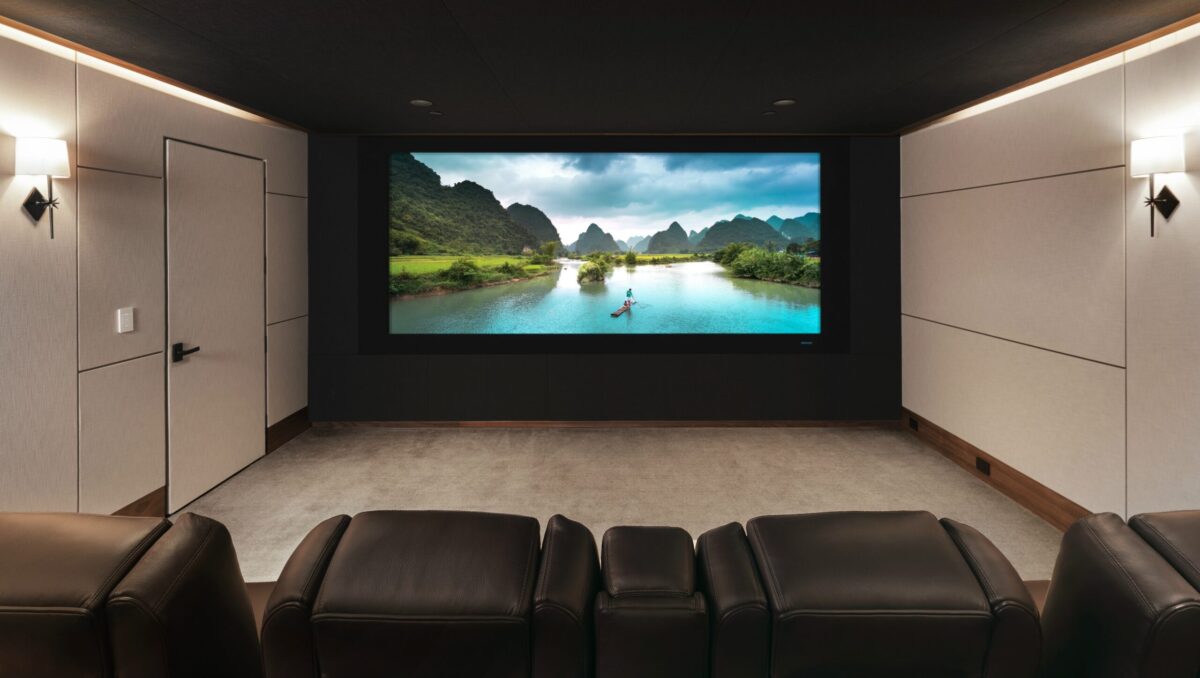You’ve probably seen lots of gorgeous pictorial spreads of fabulous home theaters in the sprawling houses and penthouse suites of the rich and famous. They’ve been a must-have for a while in large luxury homes.

Now with the upended lives we’re all leading thanks to Covid19, going out to the movies is looking like it might become a permanent thing of the past, and home theaters are moving from the wish list to the I must have list for many homeowners. Sure, Netflix and HBO and hundreds of other movie streaming services are adding new-release movies to their menus, but the experience of watching in your living room really isn’t the same, is it? For first-time movie viewing, we itch for that big screen, darkened room, sound-surround, immersive experience that movie theaters give us. The right time to build that experience into your own home might just be now.
Luckily, technology has advanced and efficiencies have progressed enough that an in-home complete movie theater is within reach of many, not just the ultra-rich. If you’re considering building a cinema into your home, bravo. But you should consider these six important points first:
1) Is Your Spare Room Big Enough to Convert to a Theater?
The quick answer is that your room should be at least 12 feet by 14 feet, and a minimum of 9 feet high. Of course, there are always exceptions, so if you’re close to but not quite up to the minimum dimensions, you still might be in luck. A contractor with expertise in building home theaters will be able to look at your space and tell you whether a home theater is possible.

2) Can You Afford a Home Theater?
The good news is that AV equipment, soundproofing techniques, and acoustic enhancement engineering have not only improved, they’ve become more affordable. High-quality screens, projectors, speakers, wall treatments, soundproofing materials, and theater seating now come in a variety of models. The many choices of seating styles, finishes, and AV equipment, and the ability to build a completely immersive-experience theater into rooms as small as 12 feet by 14 feet, make a high-caliber, stayed-in-but-felt-like-you-went-out awesome theater attainable for many.
3) How Much and What Type of Seating Will You Need?
Do you prefer cushy upright armchairs for movie viewing, or would you like to have just the type of seating that you’d find in a theater, with a foot rest that comes up when the seat reclines and a tray that swivels in front of you or out of the way?
Maybe you want room for a couple of bean bag chairs that will allow your kids to spring or sprawl as their energy levels dictate without disturbing you as you relax in your own chairs?
Maybe you like to snuggle with your significant other – or your whole family – on a big couch while you enjoy your entertainment together?
Or perhaps you’ve always dreamed of those decadent overstuffed chaise lounges, one per person, for viewing the big screen?
Don’t just assume armchair seating. Think about how you like to watch movies and discuss this with your theater builder before choosing the seats – or couches – or whatever suits your movie-viewing style best.

4) Should Your Home Theater Do Double Duty as a Safe Room?
One of the lovely secrets of a home theater is that some of the behind-the-scenes construction features that make it a theater, also make it super secure.
The walls are thicker. The windows are secured and covered. The door is more heavy-duty than a normal household interior door. Maybe this is the start of something bigger and better than just a theater. Maybe it’s a great foundation for a safe room.
If you’ve thought of a safe room as a “maybe” item for your home in the future, and you’re thinking of building a home theater in the meantime, talk with your builder about the possibilities for combining both into one.
5) Do You Want “Man Cave” Features?
If the room you’re going to convert is pretty spacious, and especially if it shares a wall with a kitchen or bathroom, you can let your dreams go a little further and think about bringing true decadence into your immersive theater experience. A wet bar? A popcorn maker? A candy wall, à la the Sweet Factory? You might as well give your home theater every conceivable use so that you can stay immersed in your own world without the need for forays into your kitchen for food and drink.

6) Should You Build a Separate Structure for Your Theater?
All is not lost if you don’t have a spare room you can’t do without, or if your extra space is just too small to allow for the seating or other features that you desire. Your theater at home doesn’t have to be in your home.
Theaters can be built into a garage or a basement. Or you can build an addition onto your home specifically for the home theater you desire. And the newest trend in additional space – the ADU, or Accessory Dwelling Unit – is an awesome choice for a home theater too. With recent legislative changes that have eased restrictions and licensing requirements for ADU’s, they’re easier than ever to add to your property.




